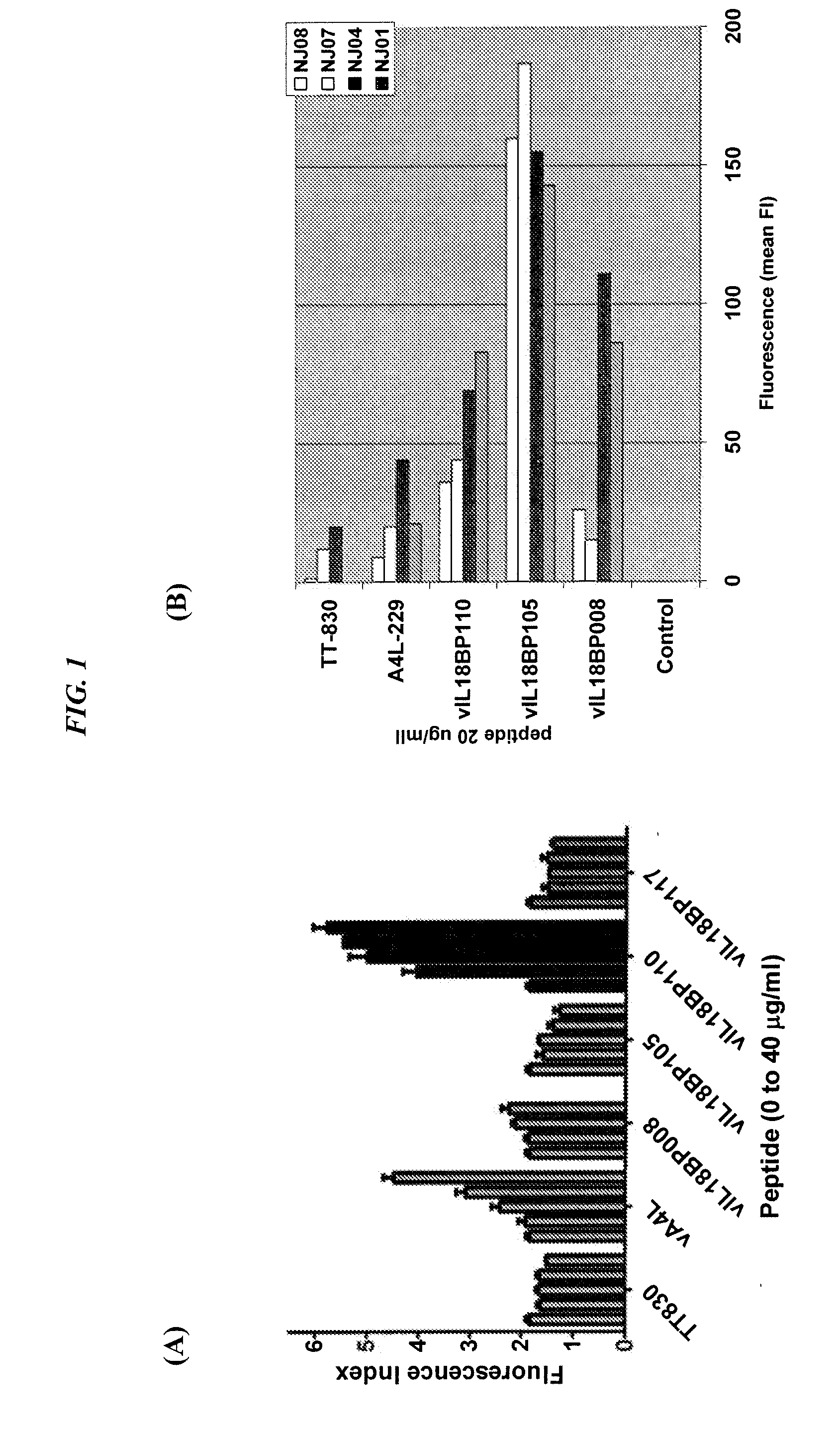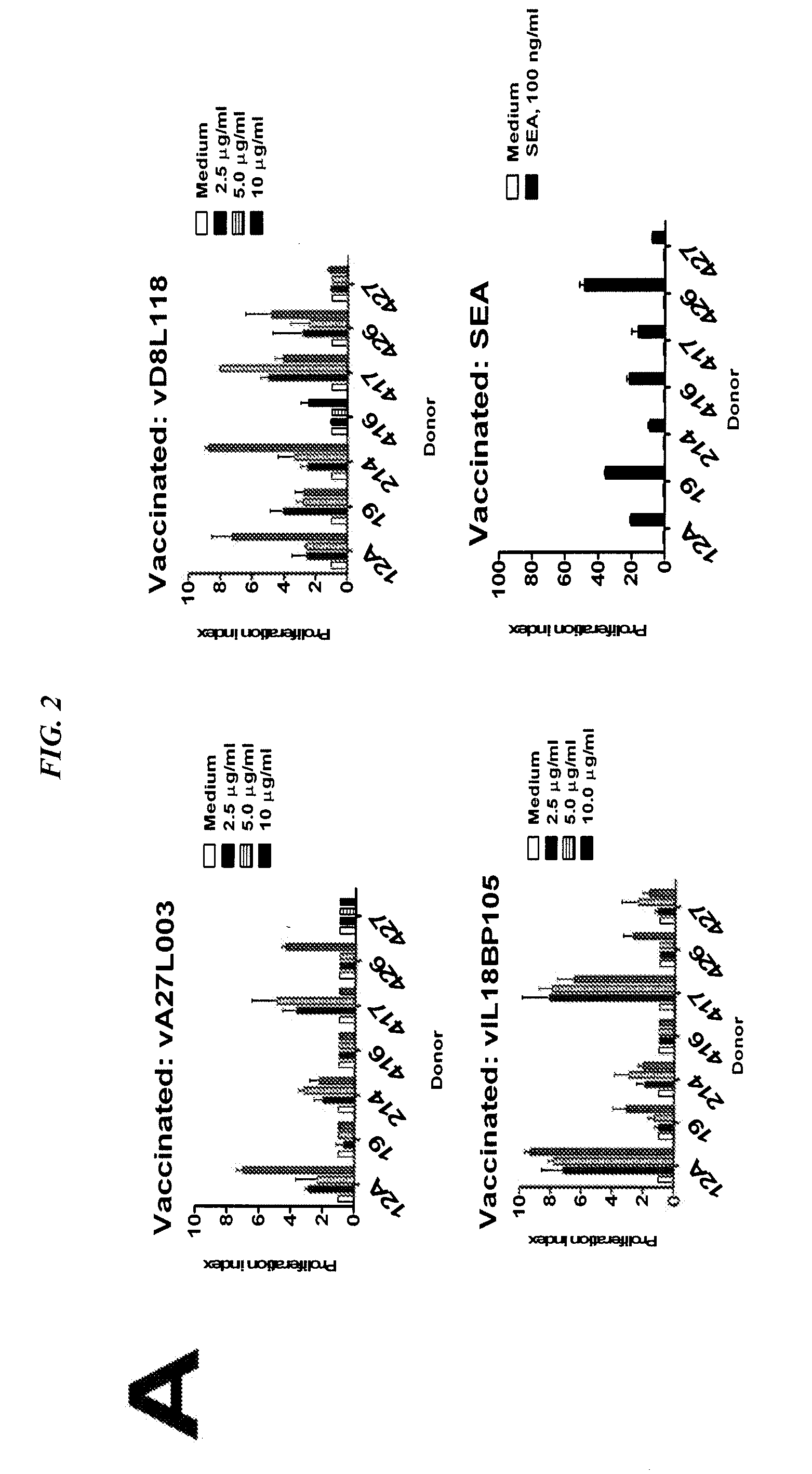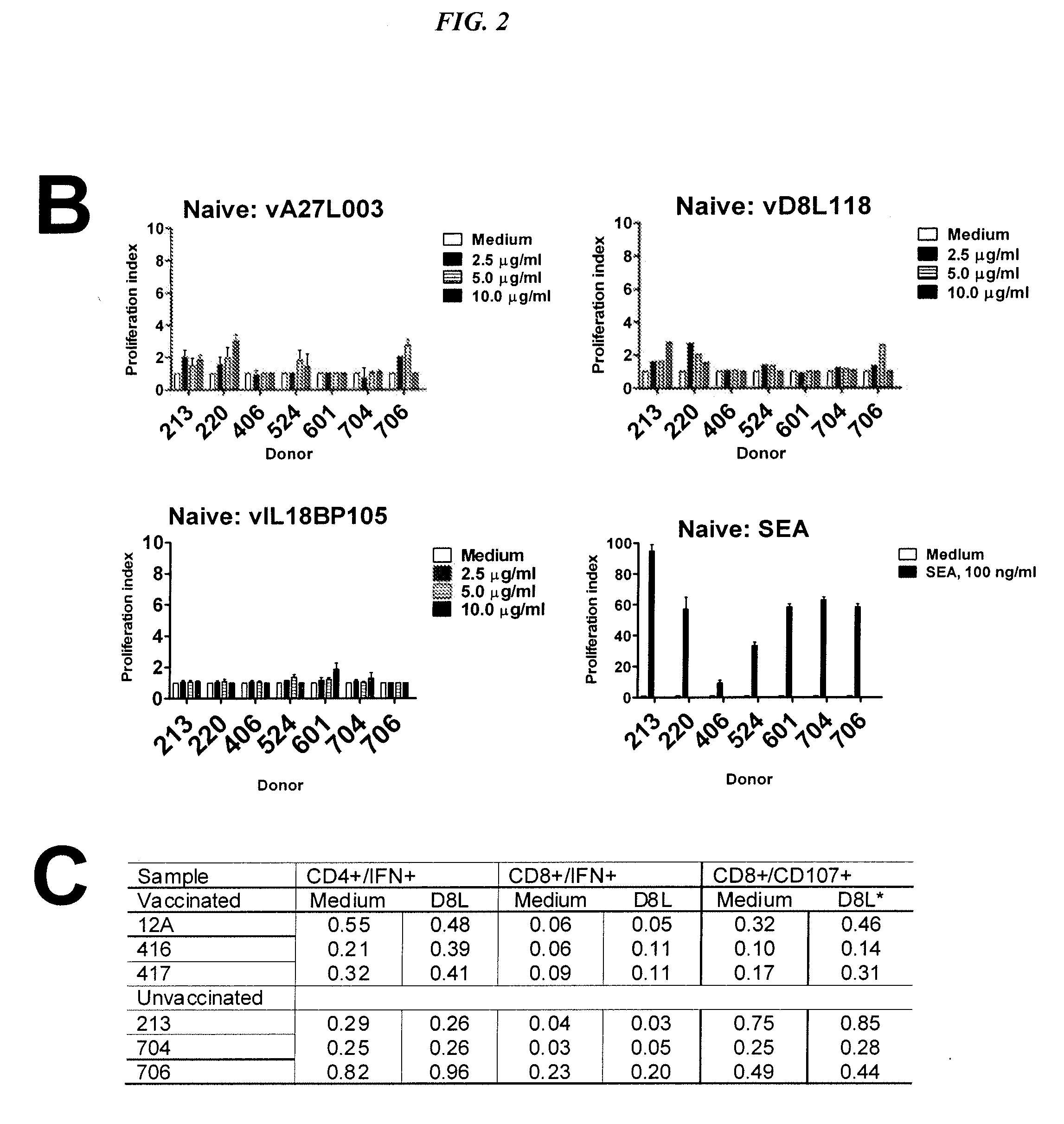Immunoconjugates Comprising Poxvirus-Derived Peptides and Antibodies Against Antigen-Presenting Cells for Subunit-Based Poxvirus Vaccines
- Summary
- Abstract
- Description
- Claims
- Application Information
AI Technical Summary
Benefits of technology
Problems solved by technology
Method used
Image
Examples
example 1
Immune Response to Poxvirus Subunit Antigenic Peptides
Materials and Methods
[0097]Peptide design. 9-mer or 15-mers peptide sequences bearing multiple potential binding sites for both HLA class I and / or HLA class II molecules were derived from poxvirus open reading frames by visual screening for HLA anchor residues at the correct spacing, or by use of web-based methods (e.g., BIMAS or SYFPEITHI [Parker et al., J Immunol 152:163-75, 1994; Rammensee et al., Immunogenetics 50:213-19, 1999]), with selection based on high potential for specific HLA-binding (Table 2). The nucleotide and amino acid sequences of vIL18BP(C12L), A4L (Boulanger et al., J Virol 72:170-79, 1998), A27L (Chung et al., J Virol 72:1577-85, 1998), or D8L (Hsaio et al., J Virol 73:8750-61) VV antigens were retrieved from NIH GenBank, Accession number: AY243312. These peptides are designated by their gene source and a number (e.g., vIL18BP105 or vD8L118).
TABLE 2Amino acid number and HLA restriction of poxvirus vIL18BP-de...
example 2
Conjugation of APC-Targeting Antibody to Subunit Antigenic Peptides for Poxvirus Vaccines
[0130]Summary
[0131]The vIL18BP105 (SEQ ID NO:15) was conjugated to the anti-HLA-DR antibody, L243, for better presentation to the immune system, and used to immunize HLA-DR04-expressing transgenic (tg) mice. Conjugated vIL18BP105 (CIL18BP105) was more readily taken up by human and HLA-DR transgenic mouse cells than free vIL18BP105 (SEQ ID NO:15). Splenocytes from HLA-DR04 transgenic mice immunized with CIL18BP105 proliferated in vitro when stimulated with vIL18BP105 (SEQ ID NO:15). Proliferation of CIL18BP105-inoculated mouse splenocytes involved CD3+CD4+CD45RA− cells. Proliferation was accompanied by interferon-γ production (quantitative sandwich ELISA). CIL18BP105-innoculated mice also showed early and rapidly rising titers of peptide-specific antibodies, 4 times that of vIL18BP105-injected controls at day 7 after the first boost. At a later time, both CIL18BP105 and vIL18BP105 (SEQ ID NO:15) ...
example 3
Nasal Administration of Subunit Vaccine
[0145]Mice (HLA-DR04 Tg) are anesthetized and vaccine is administered (15-25 μg peptide total) intranasally (i.n.) (10 μl / nostril). Vaccine is either free peptide, or peptide-L243 conjugate. For these experiments, the adjuvant is the calcium phosphate adjuvant described by He et al. (Clin Diagnos Lab Immunol 9:1021-1024, 2002) (10 μg / dose of antigen). Controls consist of unimmunized (naive) mice, mice immunized with the whole viral protein (i.n.), systemically immunized mice (peptide, sub-cutaneous (s.c.)), and mice immunized with carrier / adjuvant only (i.n.). Equal amounts of peptide are administered in each case. Mice are boosted twice using the same route as prime, at weeks 2 (d14) and 4 (d28) after priming. Combinations of route of immunization may be employed (e.g., s.c. prime, followed by i.n. immunization on day 14).
[0146]Five mice from each treatment group are sacrificed at day 35 after prime immunization (25 of the 75 mice). Serum is h...
PUM
| Property | Measurement | Unit |
|---|---|---|
| Fraction | aaaaa | aaaaa |
| Fraction | aaaaa | aaaaa |
| Fraction | aaaaa | aaaaa |
Abstract
Description
Claims
Application Information
 Login to View More
Login to View More - R&D
- Intellectual Property
- Life Sciences
- Materials
- Tech Scout
- Unparalleled Data Quality
- Higher Quality Content
- 60% Fewer Hallucinations
Browse by: Latest US Patents, China's latest patents, Technical Efficacy Thesaurus, Application Domain, Technology Topic, Popular Technical Reports.
© 2025 PatSnap. All rights reserved.Legal|Privacy policy|Modern Slavery Act Transparency Statement|Sitemap|About US| Contact US: help@patsnap.com



